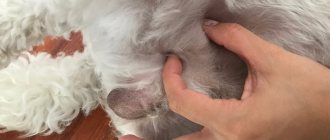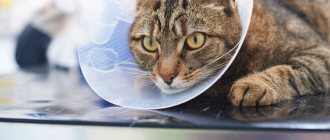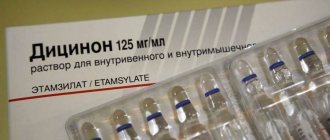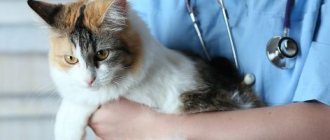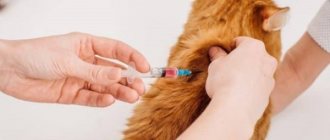March 3, 2021
Cryptorchidism in dogs is essentially the same as in cats. In this article, using cats as an example, we will look at the problem as a whole. Cryptorchidism in cats is a pathology of the male reproductive system, in which one or two testes do not descend into the scrotum. Based on this parameter, cryptorchidism is divided into unilateral (one-sided) or bilateral (two-sided).
There are also isolated cryptorchidism, in which only this pathology is present in the cat, and combined, accompanied by other disorders in the structure and functioning of the reproductive system. In cats, this disease is less common than in dogs; the prevalence is estimated at 1.3-3.8% of males in the population.
Types of cryptorchidism
The type of cryptorchidism depends on the location of the testes that have not descended into the scrotum. The usual places for their localization are: the abdominal cavity (abdominal cryptorchidism), the inguinal canal (inguinal cryptorchidism), outside the abdominal wall under the skin (subcutaneous localization). Sometimes the last two localizations are combined under the form of inguinal cryptorchidism. Some researchers associate the type of disease with the stage of development and movement of the testes in the embryonic period in which the disorder occurred.
The testes, located in the inguinal canal or under the skin, can be fully developed and produce testosterone and sperm, which is why it is so important during castration to determine the location of both testicles and remove them.
The testes located in the abdominal cavity are, as a rule, underdeveloped, small in size, and unable to synthesize hormones and germ cells, since the conditions for their formation are very different from natural ones. Bilateral cryptorchids with both testes located abdominally are often infertile.
In the abdominal form of cryptorchidism, the testicle is located in the abdominal cavity in the space between the kidneys and the internal inguinal ring, depending on at what stage of movement it stopped. Incomplete abdominal cryptorchidism also occurs, in which the epididymis of the testis bypasses the internal inguinal ring, and the testicle itself remains in the abdominal cavity, usually near it.
In conditions of inguinal cryptorchidism, the testis remains in the inguinal canal, between the inner and outer rings; its position is important to accurately determine before surgery.
With a subcutaneous location, the testis is usually located in the femoral triangle (an area bounded by two muscles and the inguinal canal), and may be located near the underdeveloped scrotum.
Features of castration
Castration of cryptorchid animals is similar to regular castration. The differences are in operational access. The veterinarian performs a laparotomy or laparoscopy to access and explore the abdominal cavity, with a preliminary ultrasound examination. Finding a hidden testis is the most difficult thing; it can be atypically changed, occupying a secluded place, for example, between muscle layers.
The testis does not dissolve over time; its hypertrophy is more likely to occur, and in the future - tumor-like growth. In this regard, partial castration is unacceptable.
Causes of cryptorchidism in cats
Cryptorchidism is a relatively long-known disease. Initially, non-descent of the testes into the scrotum was considered as a single pathology with a common cause, but over time the approach to classification has changed. At the moment, many researchers are inclined to consider cryptorchidism in cats as a phenotypic manifestation of various anomalies in the development of the reproductive system, as one of the components of syndromes associated with abnormal development of the testes.
At this stage of medical development, it is known that the process of descent of the testes into the scrotum is complex, takes place in three phases, and is regulated by a large number of structures. Anatomical structures and male sex hormones are involved in the process, and a failure in various elements of this complex system can cause the appearance of cryptorchidism.
Since the development and functioning of all these components is genetically predetermined, it was experimentally revealed that by blocking the function of genes responsible for the development of structures involved in the movement of testes from the abdominal cavity to the scrotum, cryptorchidism can be caused in an animal. Also, a similar effect was achieved by blocking the function of testosterone, which affects the formation of some structures responsible for the descent of the testicles into the scrotum.
Thus, it has now been revealed that this pathology is associated with the presence of disorders in various genes and has a complex system of recessive inheritance. In addition, it is likely that the development of cryptorchidism in rare cases may be associated with intrauterine causes - exposure to external factors on the fetus during pregnancy. Unfortunately, a complete picture of the genetic causes of the disease has not yet been formed; research is still being carried out. In animals, the situation is complicated by the fact that the most promising research methods, in particular molecular ones, are not available to veterinary medicine.
Causes of anomalies and self-detection
It is very difficult to determine why a cat developed a pathology. Experts identify several reasons why this can happen. Factors contributing to the occurrence of cryptorchidism:
- Inheritance of mutation. It has not yet been established whether the mutation is transmitted to the offspring through the paternal or maternal line.
- Anatomical features. A very short testicular cord, the occurrence of adhesions or a narrow inguinal canal contribute to the failure of the testicle to descend into the scrotum.
- Injury while passing through the birth canal.
- The presence of infections during the cat’s pregnancy and the use of potent medications during this period.
- Hormonal disorders.
It is impossible to detect pathology at an early age. But if the kitten’s father is a cryptorchid, then there is a possibility that the anomaly will also appear in his offspring. As a rule, pathology is detected only after 6 months from birth. It is at this age that the testicles should descend into the scrotum. Therefore, at this time, cat owners are advised to take their animal to the veterinarian. Inguinal cryptorchidism is not difficult to detect. Other species are much more difficult to diagnose. Sometimes the abdominal form is very difficult to detect even with the help of ultrasound.
Diagnosis of cryptorchidism
As a rule, if the testis is inguinal or subcutaneous, its location can be identified by palpation, however, if the testicle is located in the abdominal cavity of a cryptorchid cat, additional diagnostics are usually required in order to determine its presence and so that when removing it, the surgeon knows the area , in which you need to look for the desired organ.
In some exceptional cases, hormonal stimulation methods can be used to determine the presence of hormone-producing testes in a cat: when using this method, the animal is injected with a certain dose of a hormone that stimulates the secretion of testosterone, and the presence of functioning testes in the body is determined by changes in its amount in the blood.
Benefits of the procedure
Owners are not always ready to neuter their pets. Men may be especially hostile to this procedure. Despite outbursts of feelings of solidarity and concern for the safety of the cat’s personality, castration is still worth carrying out if the animal is not intended for breeding. The operation relieves the male of suffering caused by unrealized sexual instinct. The owner gets a calmer pet and does not have to worry about regular screams and smelly marks in the apartment (house).
Removing the testes or stopping their work does not always radically change the behavior of the animal. It is believed that a neutered cat turns into a lazy carcass, focused only on food. In reality, the male often retains his previous character traits such as playfulness and activity. Aggression provoked by the production of male sex hormones is significantly reduced. Castration, like sterilization of females, potentially prolongs the life of a pet, reducing the risk of developing diseases of the genitourinary system. The procedure reduces the cat's activity, so that he is less likely to want to go outside. That is, the likelihood of a male dying under the wheels of a car or in a fight for a partner decreases.
How to check your cat yourself
The location of the gonads in males differs from their location in females. This is due to the conditions for spermatogenesis (the formation of male sex cells) - it requires a lower temperature, so the testes are moved outside the abdominal cavity, where the temperature is very high.
Normally, the testes descend into the scrotum before the 10th day after the cat is born; at the age of puberty (7-8 months), the inguinal ring closes and the testes can no longer move out of the scrotum. If at the age of 8 weeks both testicles are not palpable in the scrotum, or if at the age of 9 months or more the testis can change its location - either descending into the scrotum or disappearing from it - cryptorchidism is diagnosed.
It is important to monitor the presence of testes in the cat's scrotum from the moment he arrives in the house. If the scrotum is empty, or only one round formation can be felt in it - the testis, or if the kitten has matured, but one or both testicles are in the scrotum, then no - this is a reason to consult a veterinarian for further diagnosis of possible cryptorchidism. You can also attend routine veterinary examinations, during which it is necessary to check whether the cat is cryptorchid.
Timely detection of the disease is extremely important, since the testes located in the abdominal cavity of a cryptorchid cat can degenerate into a cancerous tumor under unnatural conditions at higher temperatures. Also, due to the loose location of the testis outside the scrotum, torsion of the testicle and spermatic cord may occur, which will cause severe pain in the cat and a number of possible unpleasant complications. Drug treatment of cryptorchidism has shown to be ineffective, and the only way to correct this pathology at the moment is surgery.
Postoperative period in horses
Castration of a cryptorchid stallion is a rather complex operation. It leaves a large wound. The recovery period takes about 2 weeks. During this period it is necessary to keep the animal on a short leash. After surgery, antibiotics and anti-inflammatory drugs are indicated.
You need to carefully monitor the cleanliness of the room and the bedding. This will help prevent the wound from becoming infected. It is necessary to protect the animal from blood-sucking insects, as they can spread infections.
For 14 days after castration, the stallion is contraindicated in any physical activity. The food should be light, since disturbances in the gastrointestinal tract negatively affect wound healing.
Is it possible to remove only one testis?
No, such an operation is not performed. Cryptorchidism is a genetic disease, the prevalence of which can only be reduced by excluding affected individuals and carriers from breeding. If a sick cat is found in the litter, the breeder must decide to exclude the cryptorchid, as well as its parents, from breeding, since they are carriers of the disease.
Despite the fact that pathology can only manifest itself in males, females, without suffering from the disease due to the different structure of the reproductive system, can be carriers. If cryptorchid appears repeatedly in the litters of a parent couple, siblings (littermates) of sick cats are also excluded from breeding. Since the testes of a cat perform one function - participation in the reproduction process - cryptorchid must be castrated.
If you remove only the testis that has descended into the scrotum, then the remaining testicle in the abdominal cavity or pelvic area may eventually degenerate into a malignant neoplasm. In addition, the testes located in the groin area may well function and produce testosterone, causing unwanted sexual behavior in cryptorchid, so a cat with one testicle that has not been removed may behave in the same way as one that has not been castrated.
Prevention of cryptorchidism in cats
Cryptorchidism is a genetic disease; it is not recommended to breed cats with unilateral cryptorchidism, since such cats remain capable of reproduction until complete castration.
Most cats with bilateral cryptorchidism cannot have offspring. The reason for this is the fact that the temperature inside the body is much higher and sperm cannot be formed normally.
Specialists at Smart Veterinary Medicine recommend castration of a cat if cryptorchidism is diagnosed, since this surgical procedure allows to eliminate the anomaly and prevent the harmful consequences of its existence in the animal’s body. After castration, your cat will become calm, stop marking its territory and worry about satisfying the basic instinct of reproduction.
How is the operation performed?
The complexity and technique of the operation will depend on the location of the testis. If the testicle of a cryptorchid is located under the skin in the groin area, and it can be moved to a normal anatomical position, the operation will not differ from routine castration: the cat is anesthetized by intravenous injection of the drug into a catheter, then through small incisions on the scrotum The testes are removed, a biological node is applied to the spermatic cord, and the testes are removed.
If the testis is deeper, a lower midline incision is made along the linea alba, the inguinal fat deposits and external inguinal ring are examined, the testis is removed, the spermatic cord is ligated, the testis is cut off, and then the remaining testicle is routinely removed. A suture is placed at the incision site. If the testicle is located in the abdominal cavity, a full-fledged abdominal operation is performed, comparable in invasiveness to castration of the female, since the organ of the reproductive system is also located in the abdominal cavity. In this case, gas anesthesia is used and a suture is necessary on the incision area.
Methods of therapy
Carrying out the operation
It is best for an animal with this diagnosis to be neutered.
The main treatment for cryptorchidism is surgery, which is performed in several ways. As a rule, complete castration of a cryptorchid cat is carried out. Some believe that it will be better for the pet if at least one testicle remains. But veterinarians recommend complete removal of organs, explaining this with a number of advantages:
- exclusion of breeding and transmission of cryptorchidism to kittens;
- eliminating aggression;
- getting rid of spring torments, and getting rid of yourself from the constant meowing and screams of the cat.
The surgical technique is selected by the veterinarian individually for each pet and depends on the type and severity of the disease. Before surgery, your cat will need to have a blood test and a cardiac exam. Surgery for cryptorchidism is performed under general anesthesia, since the manipulation is painful. The duration of the procedure is from 60 minutes to one and a half hours. The pet is prescribed abdominal surgery, during which the descended testis is completely removed, and the hidden one, given the type of cryptorchidism. If the disease is of the inguinal type, then the cat’s belly hair is first shaved off, after which the veterinarian surgeon makes an incision and excises the testicle, and the spermatic cord is cauterized and tied.
The operation for the abdominal type of cryptorchidism is particularly difficult, since the procedure is reminiscent of sterilizing a cat. A long incision is made, the ovary is pulled out beyond the vas deferens and excised completely.
Care after surgery
If there is a need for pain relief, the animal should be given medications prescribed by a doctor.
An operated cat requires special care for a speedy recovery. During the rehabilitation period, owners should adhere to the following recommendations:
- The apartment should have a stable temperature and no drafts.
- An animal with cryptorchidism is given a special collar to prevent scratching of the stitches.
- Regular treatment of wounds with antiseptic solutions.
- Give your cat medications to reduce fever or pain, if necessary.
- If it is difficult to remove stool, a laxative is given.
- Under no circumstances should they give medications at their own discretion, since even Paracetamol or Drotaverine, which is familiar to the human body, can lead to the death of a pet.
Postoperative care
With routine castration, postoperative care is simple: since no suture is placed, no specific care of the incision area is required. The incision usually heals within a few days. During this period, it is important to exclude the possibility of the cat licking the scrotum area; it is advisable to monitor him at least in the first few hours after the operation. The cat's tongue is covered with sharp papillae and is very rough, which is why the wounds that the cat licks are very damaged.
If your pet shows interest in the incision site, you need to put a protective collar on it. It is necessary to change the filler and wash the tray so that contaminated surfaces come into contact with the wound as little as possible. It is advisable to limit physical activity as much as possible on the day after surgery, let the cat jump on various surfaces as little as possible and lie on a cold floor.
In addition, it is necessary to reconsider the pet’s diet: if the cat ate industrial food, after the operation it is advisable to switch to a diet for castrated cats; if he ate natural food, it is necessary to reduce the caloric content and energy value of the food consumed. Since after castration, due to a decrease in the amount of testosterone, cats begin to spend less energy, and due to an increased interest in food, they eat more, insufficient attention to the amount and composition of food offered to the cat can lead to obesity in the future.
If a cat has had a testicle located in the abdominal cavity removed, it is necessary to monitor the condition of the suture for 10 days and wear a blanket and a protective collar. A few days after the operation, you need to untie the last two or three knots on the blanket and inspect the seam area. If the condition of the suture or the cat’s well-being is of concern, you can always seek advice from the surgeon who performed the operation.
Back
Caring for a cat after castration
After castration, the animal needs rest. To prevent the surgical suture from licking, it is recommended to wear a protective blanket or collar. After the operation, the surgeon will prescribe antiseptic solutions and ointments for treating the sutures. It is necessary to ensure that the seams are always dry and clean. If redness and soreness of the tissues around the suture, or discharge of pus or blood from the suture appears, immediately show the cat to a veterinarian!
Sutures are removed 10-14 days after surgery.
The only measure to prevent cryptorchidism in cats is to exclude cryptorchid cats from breeding.
(c) Veterinary center for the treatment and rehabilitation of animals “Zoostatus”. Varshavskoe highway, 125 building 1. tel. 8 (499) 372-27-37
